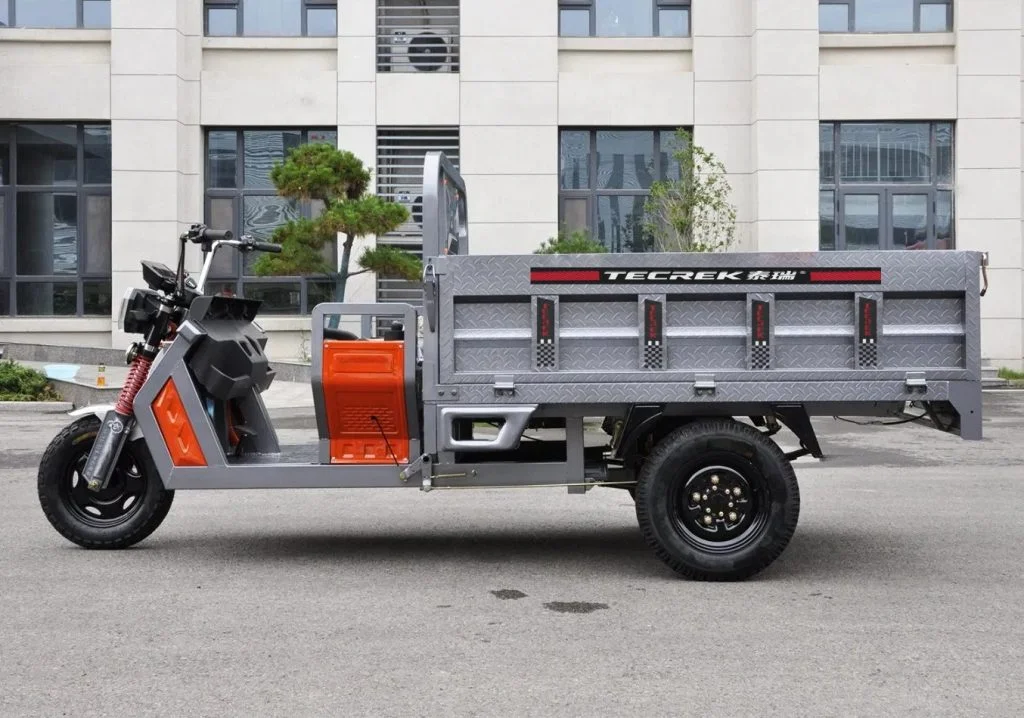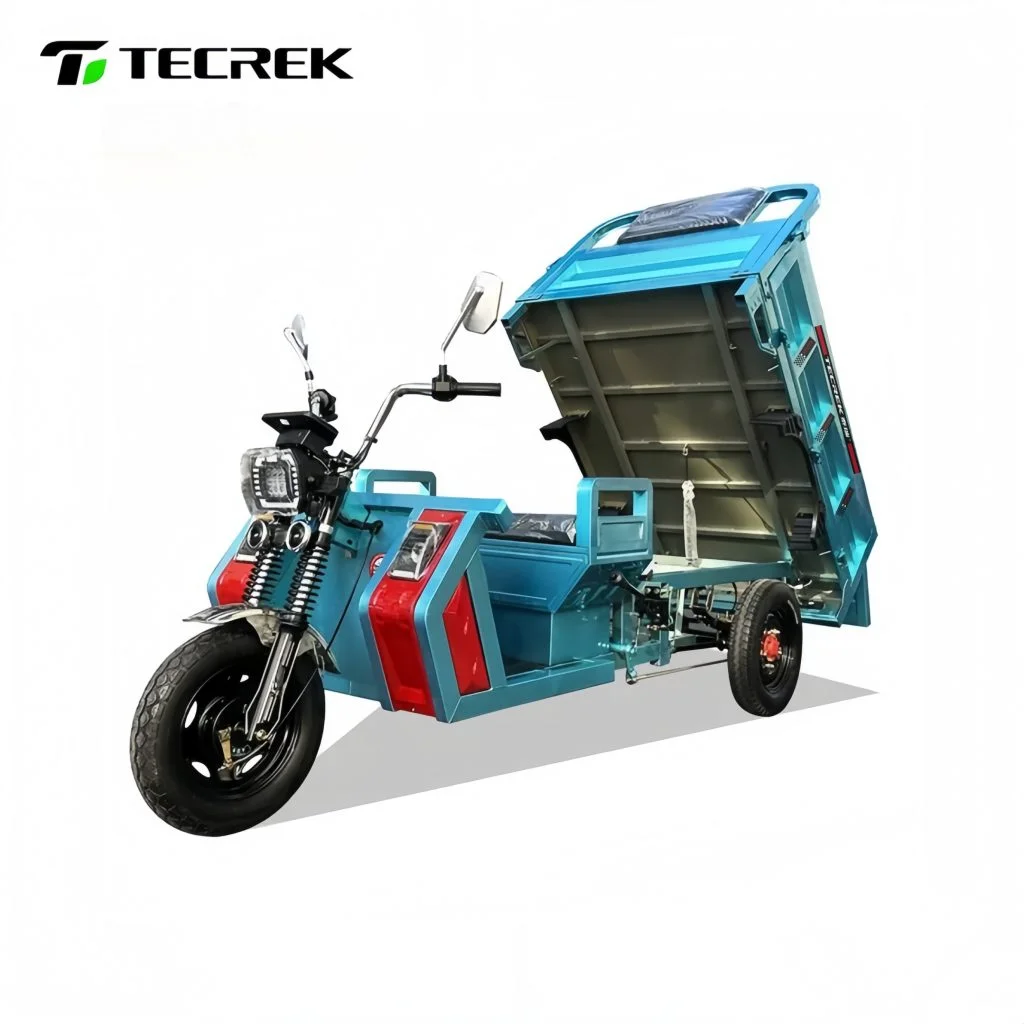겨울은 전기 자동차 배터리에 대한 도전을 가져옵니다.냉동 온도는 당신이 행동하지 않으면 그것의 힘을 줄이고 수명을 단축 할 수 있습니다.매일 배달하기 위해 견고한 화물 운송기를 사용하면 에너지가 추운 상태에서 사라지는 것을 볼 수 있습니다.이 게시물은 배터리를 강하게 유지하기 위해 간단하고 실용적인 팁을 공유합니다.전기 자동차에 대한 신뢰할 수 있는 이름을 주목해보자.

2003년부터, 산동 TaiRui 전기 이동성에서 충전을 이끌었습니다.이 산업 거대한 기업은 현실 생산과 스마트 연구를 혼합하고 있으며, 여객차, 상업용 장비, 그리고 10개의 공장과 4개의 연구 및 강화에 걸쳐 독특한 설정을 만듭니다.D 센터, 360,000 평방 미터.152억 위안의 자산으로, 그들은 신뢰성을 위해 만들어진 전기 마이크로 카와 저속 차량에서 빛나는.레트로 클래식에서 맞춤형 캐빈까지의 디자인은 현대적인 기술과 시간이 없는 스타일을 결합합니다. 전체 차량 라인업은 전력, 안전 및 편안함을 제공하며 특별한 차량은 창의적인 솔루션으로 어려운 작업을 해결합니다.스스스스스스스스스스스스스스스스스스스스스스스스스스스스스스스스스스스스스스스스스스스스스스스스스스스스스스스이 분야를 추적한 사람으로서, 나는 이웃 운송업체처럼 그들의 전기 차량이 어떻게 조용히 도시 여행을 변화시키는지 감사합니다.그들은 차량을 만드는 뿐만 아니라 효율성과 자신감으로 여행을 강화합니다.전문가들이 어떤 날씨를 처리할 수 있는 견고한 전기 솔루션에 의존하는 이유를 알아보기 위해 그들의 세계를 탐험하십시오.
추운 날씨가 전기차 배터리를 해치는 이유
냉각은 배터리의 작동 방식을 변화시킵니다. 냉동 아래에 리냉냉 이온 세포가 느리게 됩니다.이것은 그들의 능력을 줄이고 저항을 높입니다.당신은 약한 시작이나 짧은 여행을 발견할 수 있습니다.상업용 차량의 경우, 이것은 요금당 배달이 적다는 것을 의미합니다. 지연은 빠르게 상상승할 수 있습니다.
낮은 온도는 효율성을 20-30%로 줄일 수 있습니다.더 많은 충전이 필요합니다.세포가 냉동하면 손상이 지속될 수 있습니다.느린 가속 또는 낮은 전력에 대한 대시보드 경보를 보십시오.이 표시는 배터리가 도움이 필요하다는 것을 보여줍니다.이제 겨울의 물음으로부터 보호하는 방법을 찾아보자.
추운 날씨에서 배터리를 안전하게 유지하는 간단한 방법
쉬운 단계로 배터리를 보호하십시오.겨울이 타기 전에 준비를 시작하십시오.
그것을 따뜻하게 하고 절연

운전하기 전에 배터리를 따뜻하게 하십시오.많은 전기 차량은 앱이나 타이머를 통해 미리 가열 옵션을 가지고 있습니다.그것을 사용하여 배터리의 온도를 부드럽게 높이십시오.차량이 부족하면 차고에 주차하십시오.또한 열을 유지하기 위해 절연 커버를 사용할 수 있습니다.화물 차량, 같은 신뢰할 수 있는 화물 운송을 위한 상업용 전기 삼자전거이 트릭은 이 어려운 길에서도 에너지를 안정적으로 유지합니다.
절연제는 차가운 공기와 눈을 차단하는 절절감이나 매트에서 더 도움이 됩니다.주차할 때 따뜻함을 주주주차할 때 배터리 지역 주위에 배치하십시오.이것은 매일 범위를 증가시키고 이이이것은 이이이러한 점열이 이이이이동하는 것을 방지합니다.다음으로, 스마트 충전 습관은 이 보호를 기반으로 합니다.
Smartly 충전
차고 같은 따뜻한 장소에서 충전하십시오.차가운 배터리는 천천히 전력을 얻습니다.빠른 충전기 대신 레벨 1 또는 2 충전기를 사용하십시오.빠른 충전기는 세포를 마모할 수 있는 열을 만듭니다.따뜻한 시간 동안 충전하여 20-80% 사이의 레벨을 유지하십시오.이것은 스트레스를 줄입니다.
배송 차량의 경우, 이러한 습관은 배터리를 과과하게하지 않고 전력을 유지합니다.충전하는 동안 전압을 확인하십시오.이상하게 점프하는 경우, 먼저 일시 중지하고 배터리를 따뜻하게 하십시오.좋은 충전은 더 나은 유지보수를 가져옵니다. 다음에 다루겠습니다.
자동차 보관 및 관리
비활동할 때 차량을 현명하게 보관하십시오.따뜻한 차고가 가장 잘 작동합니다.밖에 있다면, 얼음을 피하기 위해 땅에서 들어올리십시오.노출된 부분을 커버합니다.겨울에 악화되는 소금이나 물 축적을 중단하기 위해 배터리 터미널을 종종 청소하십시오.
매달 밀봉과 연결을 확인하십시오.옷을 찾아보세요.화물 차량에서 이러한 단계는 일찍 문제를 발견합니다.그들은 시스템을 강하게 유지합니다.액세서리는 다음에 볼 것처럼 이 관리를 향상시킬 수 있습니다.
모니터 및 추가 사용
온도와 건강을 실시간으로 추적하기 위해 배터리 모니터를 얻으십시오.앱이나 장치는 방울에 대해 경고하여 빠르게 작동할 수 있습니다.열 담요 또는 플러그 인 히터와 같은 추가 기능은 배터리를 밤새 따뜻하게 유지합니다.
중량 차량의 경우, 이러한 도구는 밀봉된 디자인에 잘 맞습니다.그들은 추가적인 힘을 추가합니다.견고한 방어를 위해 이전 팁과 결합하십시오.이 접근 방식은 왜 일부 차량이 냉각을 더 잘 처리하는 지 강조합니다.
왜 어떤 차량은 추운 날씨에서 뛰어난 이유
최고의 차량은 똑똑한 디자인 덕분에 겨울에 빛날 수 있습니다.열 시스템을 갖춘 강력한 리열열 이온 배터리를 가진 모델을 선택하십시오.이들은 온도를 안정적으로 유지하고 차가운 스이이싸우고 있습니다.
화물 작업에서 견고한 프레임은 부품을 진동과 날씨로부터 보호합니다.밀봉된 배터리 케이스는 겨울의 적인 물을 차단합니다.효율적인 모터는 에너지를 절약하여 낮은 온도에서 부하를 완화합니다.이것은 중단 시간과 수리 비용을 줄입니다.
배터리 보증은 종종 냉각 관련 문제를 포함하여 구조에 대한 신뢰를 보여줍니다.가혹한 기후에 대한 추가 절연제와 같은 사용자 정의 기능을 추가할 수 있습니다.이러한 차량은 일년 내내 부드러운 운영을 보장하기 위해 계속 강력합니다.
기본 모델과 비교하면, 이 모델은 기기본 모델과 비교하면 기기기본 모델과 비교하면 차량당 최대 100킬로미터까지 더 긴 범위를 제공합니다.안티 슬리프 컨트롤과 같은 안전 혜택은 충돌을 방지함으로써 배터리를 보호합니다.품질의 차량을 선택하는 것은 겨울을 통해 지속되는 신뢰성에 투자하는 것을 의미합니다.
포장 및 다음에 해야 할 일
배터리를 차가로부터 보호하려면 지속적인 노력이 필요합니다.따뜻하게 충전하고 신중하게 저장하고 모니터를 사용하십시오.이러한 단계는 차량이 잘 작동하고 더 오래 지속됩니다.이것을 쉽게 만들기 위해 내장 강점을 가진 차량을 선택하십시오.
사용자 정의 조언을 위해, 체크아웃 서비스 전문가 검사 또는 업그레이드와 같은 옵션. 연락처 귀하의 요구에 맞게 솔루션을 맞추기 위해 웹사이트를 통해 지원합니다.겨울을 앞두고 차량을 준비하십시오.
FAQ는
Q: 내 전기 자동차 배터리가 추운 날씨에서 고통하고 있음을 보여주는 어떤 Q Q Q: What clues show my electric vehicle battery is struggling in cold weather?
A: 더 짧은 거리, 느린 충전 또는 대시보드의 전력 경보는 빨간색입니다.약한 가속도 또는 시작 문제도 냉각과 관련된 문제를 가리키고 있습니다.온난화 방법으로 빠르게 행동하십시오.
Q: 겨울에는 배터리를 얼마나 자주 검사해야 합니까?
A: 단말기 부식, A A: 매달 확인하십시오.매일 모니터를 사용하십시오. 특히 화물 배달과 같은 무거운 작업에서 문제를 알아보십시오.
Q: 액세서리만으로는 극단적인 추위에서 배터리를 저장할 수 있습니까?
A: 열 담요와 같은 액세서리는 도움이 되지만 내장 기능과 좋은 습관으로 가장 잘 작동합니다.완전한 보호를 위해 스마트 충전과 결합하여 어떤 날씨에도 차량을 강하게 유지하십시오.
